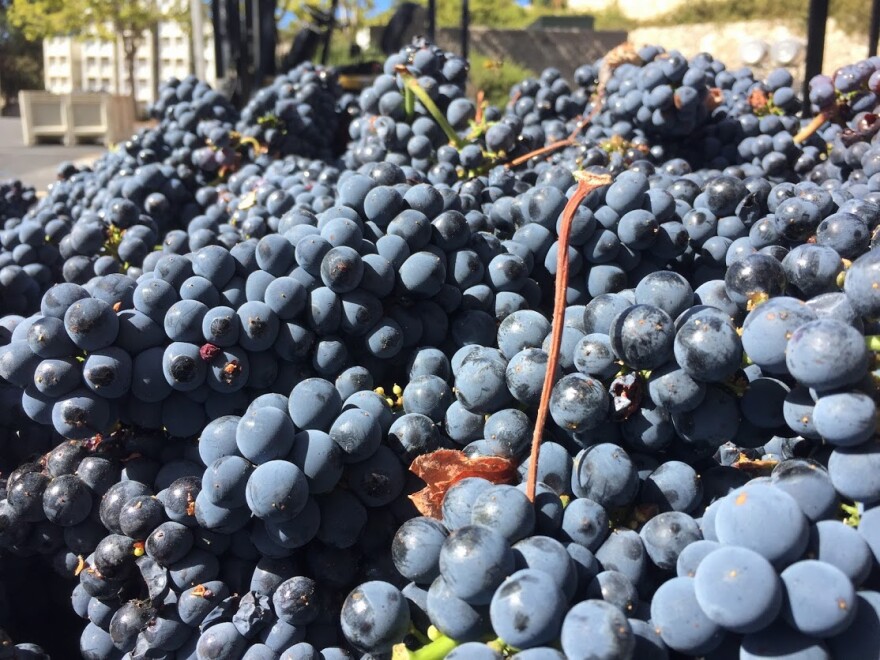This week's heat wave hit during mid-harvest for many local wine-grape growers—one of the Central Coast's top crops.
Hot temperatures greatly speed up the maturation process, kicking harvest into overdrive.
While most of the heat-sensitive grapes, like Pinot Noir, have already been picked, there are still many varieties still on the vines.
Ryan Carr is a vineyard manager in Santa Barbara County and told KCBX the last time a heat wave like this hit in late September was back in 2010, but that one lasted much longer.
"It's probably less of a problem this year than it's been in past years," Carr said. "Most of the grapes that are still on the vines are going to be Rhone varietals and Bordeaux varietals, and those guys can handle a little bit more heat and will probably survive this quite nicely."
Carr said grapes that would have stayed on the vines for a week or two still, will now likely get picked in the coming days because of the heat wave.
Heather Muran is with the San Luis Obispo Vintners and Growers Association and said Tuesday that the heat has really sped up the ripening for many growers in the coastal region>
"We had a fairly cool summer, with many growers waiting for fruit to ripen," Muran said in an email to KCBX. "The current heat has really gotten the ball moving, with most wineries reporting that they could be finished with harvest in the next two weeks."
Muran and Carr agree that this year's crop is high quality. The rains over the winter and spring helped the vines bounce back, with "mild spring and summer temperatures building complexity in the wines and average to above-average yields" according to Muran.
Carr said this year's harvest is looking very good with larger cluster and berry sizes.
California's ongoing drought is at least partially responsible for smaller yields in recent years.


